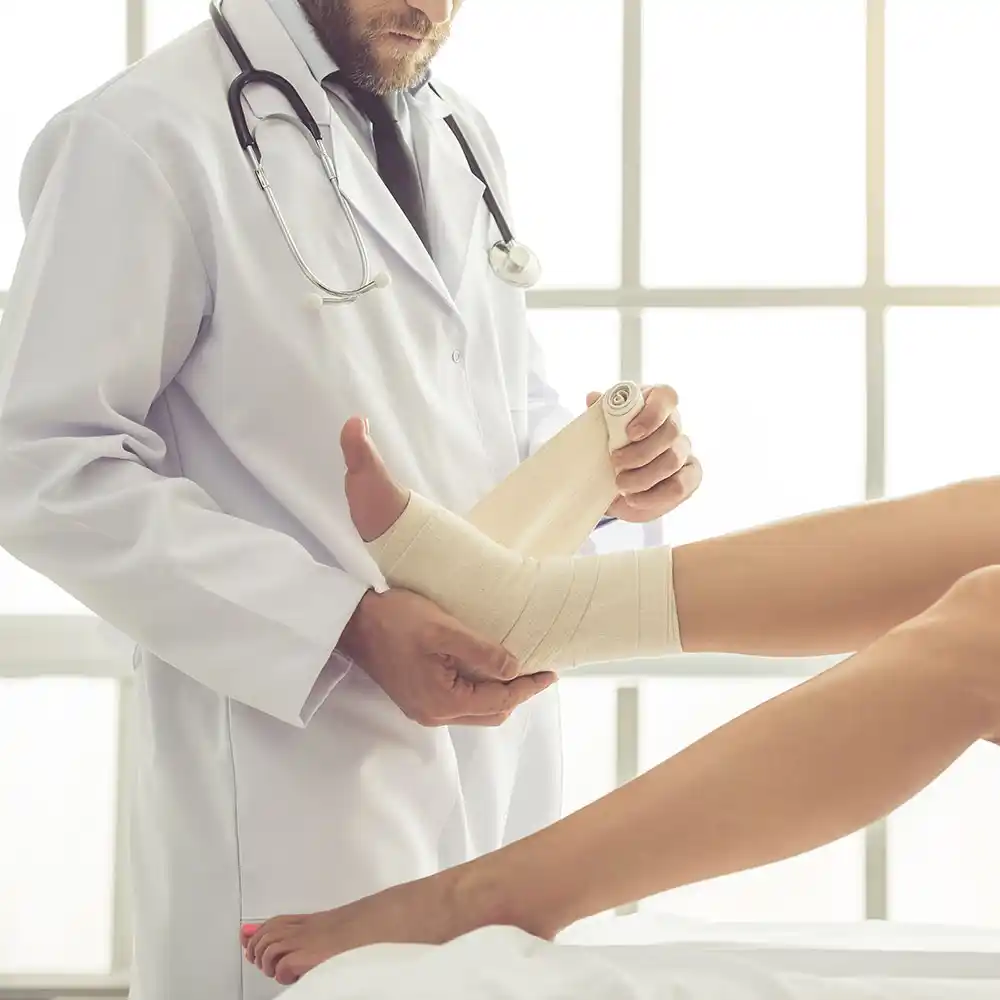Alternative Treatment Solutions
Wound Care
The human body’s own healing capabilities are incredible -- that’s why we’ve harnessed that ability to create autologous cell therapies in the first place. But some wounds are more difficult to heal on their own than others, and those wounds need extra support in order to close effectively and for the long term. Other medical conditions like diabetes, peripheral neuropathy, chronic infection or circulatory problems can contribute to non-healing wounds.
Greyledge can enable your physician to offer state-of-the-art Regenerative Medicine treatment options that help accelerate healing, providing support in treatment for diabetic ulcers and sores. Made using technology at the forefront of biologics treatment, our PRP and BMC preparations are tailored to your individual needs, and they offer alternative treatment for wounds that need assistance during the healing process.
Whatever your needs are as a patient, we’ll enable your wound care team to give you the quality treatment you deserve. Ready to find relief? Talk to your doctor about Greyledge today, or find a Greyledge-affiliated physician near you.

PRP Treatment for Diabetic Ulcers and Sores
Platelet-Rich Plasma For Wound Care
Greyledge’s capabilities include creating a number of cutting-edge preparations for use by wound care specialists, including platelet-rich plasma, or PRP. Here’s how the process of creating PRP works:
- Your primary care physician will draw whole blood from your body.
- The blood drawn will be separated into 3 layers -- red blood cells, platelet-poor plasma, and a “Buffy Coat” made up of both platelets and white blood cells.
- Our highly-specialized technicians will create a concentrate, balancing all of these elements perfectly to create customized PRP designed to offer the optimal treatment for your body and the specific nature of your wound.
- Greyledge will provide your PRP product to your physician to be reinjected into the affected area.
Diabetic wound care can be difficult, but PRP jump-starts your body’s natural ability to heal. This allows for a faster, more effective recovery from non-healing wounds, particularly as a result of peripheral neuropathy and diabetes.
To learn more about how PRP can help you recover more effectively from stubborn wounds, reach out to us -- we’re happy to discuss our capabilities with you or your doctor.
Stem Cell Therapy for Chronic Skin Wounds
Bone Marrow Cellular Concentrate for Wound Care
Stem cells are unique in the fact that they don’t just serve one predetermined purpose. They exist at a stage in which they can transform into any other type of cell, allowing them to become whichever cell is necessary to restore the tissue compromised by neuropathy and other wound-causing conditions. They can even serve a sort of “leadership role” and rally other, similar cells to do the same and are known to release proteins involved in stimulating new blood vessel formation.
In this way, bone marrow cellular concentrate (BMC) can provide stem cell therapy for dermal wound healing. Here’s how it works:
- Your treating physician will extract blood from your own bone marrow using a special needle. This blood includes stem cells and many other cell types as well as platelets.
- We’ll take this sample back to our lab, then concentrate the cells into a single preparation customized to your body and your injury.
- The sample will then be reinjected into the affected area.
Stem cells are unique in the fact that they don’t just serve a single purpose -- they exist at a stage in which they can transform into any other type of cell. Equally as important, they are critical to coordinate the healing process necessary to restore the circulation and stimulate tissue repair, when compromised.
The abilities of the stem and progenitor cells found in your own bone marrow makes BMC extremely valuable in allowing your body to reconstruct damaged tissues, resulting in stem cell patch wound healing.
Frequently Asked Questions
What is a non-healing wound?
A wound that fails to heal within 5-8 weeks, in spite of proper care and following your doctor’s guidelines, is known as a non-healing wound. These wounds can occur as a result of a number of conditions, the most common of which is diabetes and its associated condition, peripheral neuropathy. These wounds carry a high risk of becoming infected, which is why it’s important to treat them as soon as you possibly can.
How long will my recovery take after starting PRP or BMC?
Every patient is unique, and while cell therapy can accelerate the healing process for your wounds, you’ll need to look to your specialist or primary care physician for an accurate estimate of your recovery time.
I’m a patient who’s interested in stem cell therapies for wound healing. How can I get my doctor involved or find a stem cell doctor near me?
Engage your treating physician. Let them know of the benefits of the unique Greyledge approach, and link them here.
Alternatively, you may be able to find a physician who is already utilizing Greyledge and is providing fully-customizable platelet replacement therapy and bone marrow concentrate near you. If you’d like to get started with one of the most innovative biologics companies in the field, find a Greyledge user today.
